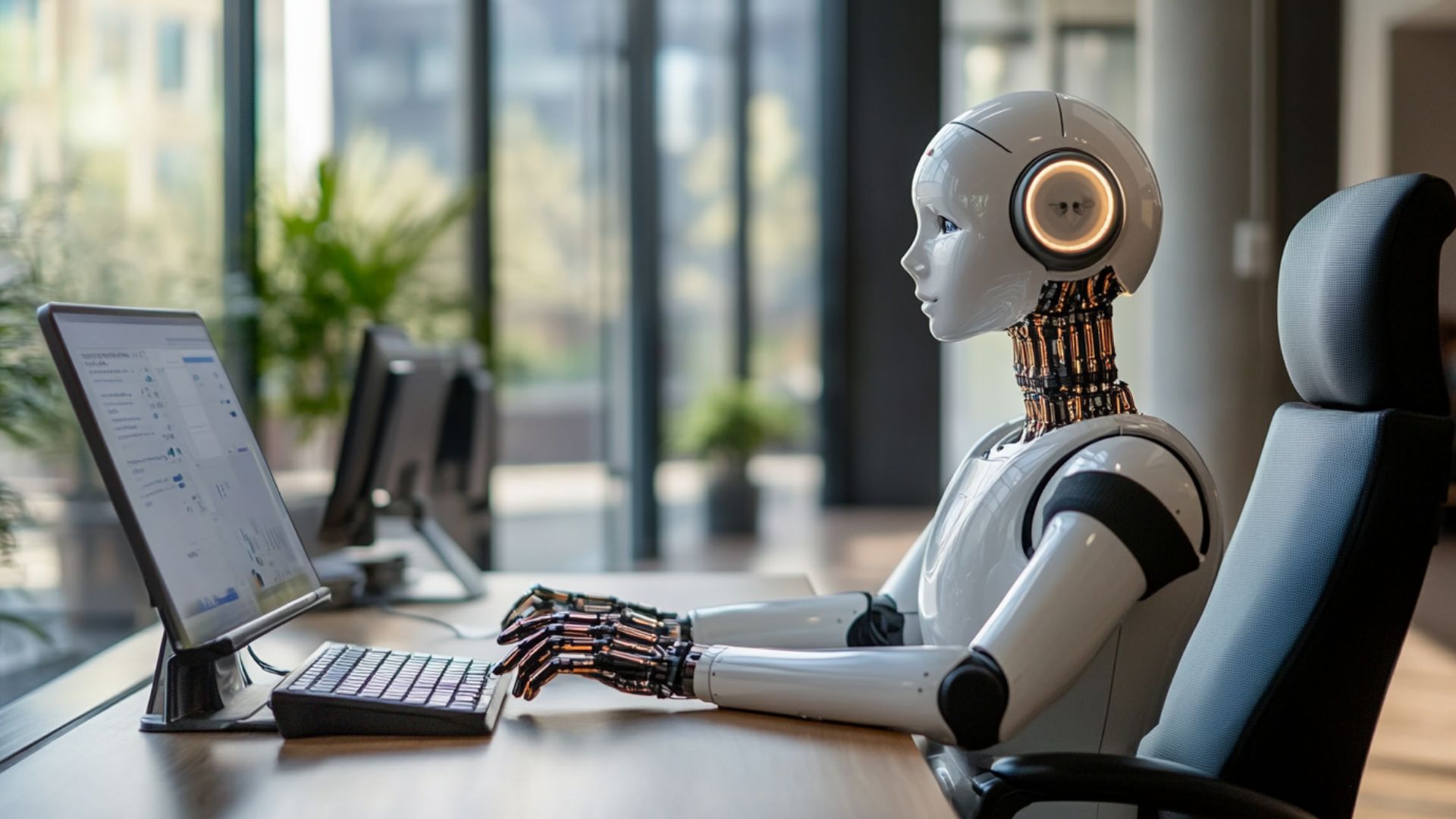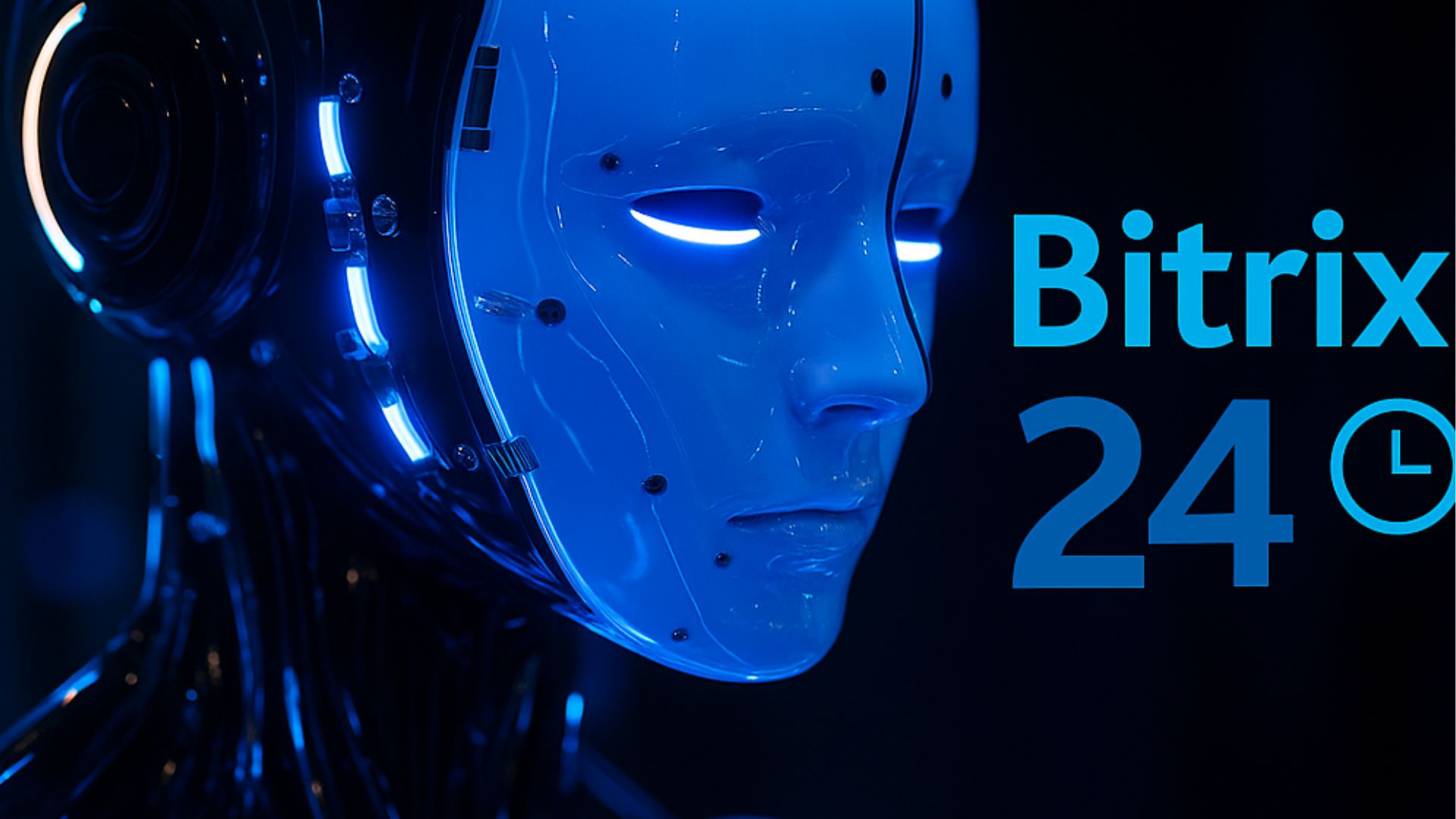How RPA and Machine Learning Work Together

Robotic Process Automation (RPA) and machine learning (ML) have gained significant popularity across many industries. Businesses focus on digital innovation by automating repetitive tasks to enhance efficiency. This also minimizes human error, which is a top priority for organizations.
Robots don't get tired or bored and consistently complete tasks. They enable their human colleagues to increase productivity. New technologies free up time for higher-level tasks. Augmenting artificial intelligence (AI) with ML is beneficial. It allows for independent detection and analysis of data patterns while learning from them.
The difference between robotics and RPA can be summarized clearly. RPA mimics human actions, while AI mimics human thinking. While neither tool can perfectly replicate human actions or thoughts, they work well together. They help enterprises automate complex tasks at speeds far beyond standard human capabilities. Proper integration of automation technologies needs to be carefully planned. Then you can use them to your maximum advantage. Let's discuss all crucial points.
Understanding the Foundations of RPA and ML
RPA is a type of rule-based automation that mimics human actions. It performs repetitive tasks by following predefined rules to execute data entry or invoice processing. RPA is deterministic and excels in structured environments with consistent inputs. It boosts efficiency, reduces errors, and operates without requiring data-driven learning.
ML is a data-driven approach to pattern recognition and prediction. It uses algorithms to analyze data, identify patterns, and make predictions or decisions. ML adapts to new data and continually improves over time. It handles complex and unstructured data like images or text. This enables fraud detection or sentiment analysis.
Key aspects of RPA and ML integration:
- Customer Support. RPA with machine learning enables intelligent chatbots to deliver dynamic responses.
- Data Extraction. ML extracts insights from unstructured data to enable RPA processing.
- Decision Automation. ML predicts outcomes, enabling RPA to make informed choices automatically.
- Error Reduction. ML enhances RPA accuracy by learning from data patterns over time.
- Fraud Detection. ML identifies anomalies, and RPA flags or processes them accordingly.
- Document Processing. ML recognizes text, and RPA automates workflows based on extracted data.
- Predictive Maintenance. Machine Learning forecasts equipment issues and RPA schedules repairs automatically.
- Personalization. ML analyzes preferences and RPA delivers tailored actions to users.
Integrating ML in RPA enhances automation capabilities significantly. It enables processing of emails or documents by recognizing complex patterns. For example, ML can extract relevant data from invoices, which RPA then processes. This combination is often referred to as RPA with machine learning integration. It enables automation of customer service chatbots or dynamic decision-making processes. This improves adaptability and accuracy across various business applications.
RPA: Automating Repetitive, Rule-Based Processes
RPA automates repetitive, rule-based tasks by mimicking human actions to execute processes efficiently. It follows predefined logic, ensuring consistency in structured environments with clear rules. RPA improves speed and accuracy while reducing human errors and operational costs. Automating routine tasks frees employees to focus on higher-value work and strategic initiatives. Common RPA use cases:
- Invoice Processing. RPA extracts data from invoices, validates it, and updates financial systems automatically. This technology minimizes manual effort and reduces processing errors significantly.
- Data Entry. RPA inputs data into databases or CRMs, ensuring fast and accurate record-keeping. It eliminates human errors and speeds up data processing workflows.
- Form Filling. RPA populates forms with predefined data automatically. It streamlines customer onboarding or application processes effectively.
Integrating machine learning in RPA enhances capabilities beyond simple rule-based automation. ML processes unstructured data, like handwritten forms, enabling RPA to handle complex tasks. ML enhances decision-making in specific areas like fraud detection in invoices. This boosts adaptability and precision significantly. Performance improvements with RPA:
| Use Case | Speed Improvement | Accuracy Improvement |
| Invoice Processing | 70% faster processing | 95% error reduction |
| Data Entry | 80% quicker entry | 98% data accuracy |
| Form Filling | 60% faster completion | 90% fewer mistakes |
RPA ensures rapid and error-free execution of routine tasks consistently. RPA with machine learning tackles dynamic, data-driven challenges effectively. This combination transforms business efficiency across various industries and applications.
Machine Learning: Learning from Data for Better Decisions
ML enables systems to learn from historical data and make predictions or informed decisions. This happens without explicit programming for each specific scenario. ML models improve over time by analyzing new data continuously. They refine accuracy and adapt to changes in patterns automatically. This data-driven approach excels in handling complex and unstructured data effectively. It significantly enhances decision-making across various industries and applications.
Combining machine learning and robotic process automation enhances automation capabilities significantly. ML processes emails or images, enabling RPA to execute complex tasks effectively. For instance, machine learning and RPA can automate invoice processing by extracting data from scanned documents. RPA then integrates with systems and enhances overall efficiency.
Essential applications of ML and RPA integration:
- Fraud Detection. ML identifies anomalies in transactions, and RPA flags them for review.
- Demand Forecasting. ML predicts sales trends, and RPA adjusts inventory levels automatically.
- Customer Segmentation. ML clusters customers based on behavior. RPA personalizes marketing campaigns accordingly.
- Sentiment Analysis. ML gauges customer feedback and RPA routes issues to appropriate teams.
- Document Classification. ML categorizes files, and RPA organizes them in proper systems.
- Chatbot Responses. ML understands queries, and RPA automates replies to customers.
- Predictive Maintenance. ML spots equipment failure risks and RPA schedules maintenance fixes.
- Credit Scoring. ML assesses risk levels, and RPA processes loan applications accordingly.
How RPA and Machine Learning Complement Each Other

The integration of ML and robotic process automation is driving a new era of intelligent automation. RPA excels at automating rule-based and repetitive tasks with high consistency. However, it often struggles with processes involving variability or unstructured data. This is where ML steps in to enhance RPA's capabilities and decision-making power.
How machine learning and RPA complement each other in modern workflows:
- Handling Unstructured Data. ML can analyze emails, scanned documents, images, and audio files. These are types of unstructured data that RPA alone cannot interpret effectively.
- Predictive Automation. ML algorithms identify patterns and predict outcomes accurately. This helps RPA learning act proactively by flagging risks or recommending actions.
- Enabling Adaptive Decisions. ML models learn from historical data continuously. They allow RPA bots to make context-aware decisions rather than following static rules.
- Enhancing Data Extraction. NLP enables RPA to extract meaning and insights from free text. This significantly improves document processing capabilities.
- Continuous Improvement. ML continuously learns from outcomes and feedback received. This allows automated processes to evolve and become more accurate over time.
- Exception Handling. When a process deviates from its normal course, ML can guide bots. It selects the most suitable resolution, reducing the need for human intervention.
Debates comparing robotic process automation and machine learning often overlook their powerful synergy. Rather than choosing one, organizations combine them for transformative results across operations. RPA and ML create resilient systems that tackle complex tasks with speed and precision.
Intelligent Document Processing
Machine learning and RPA work together in Intelligent Document Processing (IDP) systems. They handle complex, unstructured documents that traditional automation cannot process effectively. RPA performs repetitive tasks while ML adds intelligence by understanding and extracting data. This works with complex formats like PDFs, emails, and scanned forms. How RPA and machine learning drive effective IDP:
- Document Classification. ML identifies document types like invoices, contracts, or receipts automatically. RPA then knows how to handle each type appropriately.
- Data Extraction. ML uses computer vision and NLP to pull key data points. It extracts information from scanned images or text-heavy PDFs accurately.
- Language Understanding. ML interprets context, sentiment, and intent from emails or free-text fields. This helps RPA act accordingly based on extracted insights.
- Template Flexibility. Unlike traditional systems, ML doesn't rely on fixed templates for processing. It adapts to different document layouts and formats automatically.
- Error Detection. ML spots inconsistencies or missing fields in documents automatically. It alerts bots or humans to verify data before processing continues.
- Auto-Learning. ML improves with use and experience over time. As more documents are processed, the model learns and accuracy increases significantly.
- Workflow Integration. ML-powered insights trigger RPA actions like approvals, entries, or alerts. This happens based on extracted data and predefined business rules.
IDP combines machine learning and robotic process automation to transform document handling. This powerful integration enables organizations to extract, classify, and interpret data effectively. It processes unstructured PDFs, emails, and scanned forms with high accuracy. Unlike traditional automation, IDP adapts to varying formats and learns from data patterns.
ML-Driven Decision Making in RPA Workflows
AI and RPA integration transforms robotic process automation by adding intelligent decision-making capabilities. ML enhances RPA bots with predictive logic, enabling smarter automated workflows. Below are key ways ML improves RPA and AI workflows across different applications.
Key improvements ML brings to RPA workflows:
- Predictive Next Best Actions. ML models analyze historical data to predict optimal next steps. In customer service, ML suggests responses based on past interactions automatically. This reduces response time and improves accuracy significantly.
- Sentiment Analysis for Customer Interactions. ML evaluates sentiment from text or voice data automatically. In call centers, RPA and AI use sentiment scores to route urgent complaints. This improves customer satisfaction and retention rates.
- Anomaly Detection. ML identifies unusual patterns in data streams automatically. In financial processes, it flags irregular transactions for review. This ensures early detection of fraud or errors before they escalate.
- Dynamic Workflow Optimization. ML adapts workflows in real time based on performance metrics. For instance, in supply chain automation, ML prioritizes tasks based on demand forecasts. This minimizes delays and optimizes resource allocation effectively.
- Intelligent Data Extraction. ML enhances data processing in unstructured documents significantly. For example, in invoice processing, ML extracts key fields with high accuracy. This reduces manual intervention and processing errors.
- Proactive Maintenance Scheduling. ML predicts equipment failures using sensor data analysis. In manufacturing, RPA bots schedule maintenance before breakdowns occur. This ensures optimal uptime and minimizes costly downtime.
The synergy between artificial intelligence and RPA drives smarter automation across industries. ML empowers bots to make data-driven decisions automatically. It enhances accuracy and adaptability in complex workflows significantly.
Real-World Applications Across Industries
Artificial intelligence and RPA combine to streamline operations and enhance efficiency across industries. Below are specific use cases in healthcare, banking, and manufacturing that demonstrate their effectiveness.
| Industry | Use Case | How AI and RPA Work Together |
| Healthcare | Patient data management and appointment scheduling | AI extracts data from medical records. ML validates data accuracy automatically. RPA updates systems. ML predicts no-show risks. RPA automates rescheduling and sends reminders. |
| Banking | Fraud detection and loan application processing | ML analyzes transaction patterns continuously. AI flags anomalies and escalates them. RPA extracts applicant data. ML assesses credit risk. RPA processes approvals automatically. |
| Manufacturing | Predictive maintenance and inventory management | ML predicts equipment failures using sensor data. RPA automates repair scheduling and updates logs. AI forecasts demand. ML optimizes stock levels. RPA automates reordering processes. |
AI and RPA drive innovation by automating complex tasks and reducing errors. They improve overall efficiency across various business processes significantly. These tools enable businesses to operate more effectively with fewer manual processes required. Their combined power transforms workflows and enhances customer experiences across multiple industries.
Benefits of Combining RPA with Machine Learning

Machine learning and RPA integration revolutionizes business processes by driving innovation and competitive advantage. RPA combined with ML creates intelligent automation that delivers significant value. Below are the key benefits organizations experience from this powerful combination. Key benefits of ML and RPA integration:
- Reduced Operational Costs. Machine learning and RPA automate repetitive tasks while ML optimizes workflows. This cuts labor costs significantly across various business functions. For example, in data entry, RPA handles inputs while ML validates data accuracy. This saves time and resources compared to manual processing.
- Increased Accuracy. RPA learning ensures precise execution while ML detects errors before they occur. In invoice processing, ML extracts data accurately and RPA enters it flawlessly. This reduces costly mistakes and improves overall process reliability.
- Enhanced Scalability. Machine learning and RPA enable seamless scaling of operations. RPA handles higher volumes while ML adapts to new patterns automatically. In customer service, bots handle more queries while ML prioritizes urgent cases.
- Better Decision-Making. ML and RPA support data-driven decisions with predictive insights. ML predicts outcomes while RPA executes actions based on those predictions. In supply chain management, ML forecasts demand and RPA adjusts inventory accordingly.
- Faster Processing. ML and RPA accelerate processes significantly across various applications. In loan approvals, ML assesses risks quickly while RPA processes applications instantly. This saves time and improves customer satisfaction.
- Improved Compliance. RPA ensures compliance while ML monitors for anomalies continuously. In banking, RPA logs transactions while ML flags non-compliant activities automatically. This reduces audit risks and regulatory violations.
- Enhanced Customer Experience. Integration improves customer interactions through personalization and speed. ML analyzes preferences while RPA delivers personalized responses automatically. In retail, ML predicts trends and RPA sends targeted offers effectively.
- Greater Adaptability. ML learns from new data while RPA adjusts workflows dynamically. In manufacturing, ML predicts equipment failures and RPA schedules maintenance automatically. This minimizes downtime and maximizes operational efficiency.
Challenges and Considerations for Integration
Integrating machine learning with automation presents several challenges that organizations must address. These automation technologies require careful planning and expert knowledge for successful implementation. Main challenges in ML and RPA integration:
- Technical Complexity. Machine learning vs automation involves complex systems and architectures. Integrating ML models with RPA requires specialized expertise and technical knowledge. Mismatched platforms can cause delays, errors, and integration failures.
- Data Quality Requirements. ML and automation need high-quality, clean data for optimal performance. Inconsistent or incomplete data reduces ML accuracy and system reliability. RPA processes may fail without clean, structured data inputs.
- Model Training Demands. Machine learning in RPA requires robust training with sufficient data. ML models need continuous updates and retraining for optimal performance. Insufficient training data or resources can result in suboptimal automation results.
- Pipeline Maintenance. ML and automation pipelines require ongoing maintenance and monitoring. Model drift and software updates can disrupt workflows and cause failures. Regular monitoring ensures consistent performance and prevents system breakdowns.
- Scalability Issues. Integration faces scalability challenges as operations grow larger. Complex ML models may slow RPA processes and reduce overall efficiency. Optimizing algorithms is critical for maintaining high performance levels.
- Data Security Concerns. ML and automation handle sensitive information that requires protection. Ensuring compliance with regulations like GDPR is essential for legal operations. Data breaches can have serious consequences for organizations.
- Resource Requirements. Training models require significant computational resources and investment. Small organizations may struggle with costs and infrastructure demands. Finding skilled experts in these technologies is challenging and expensive.
- Ongoing Maintenance. Regular retraining of models is necessary to adapt to changing patterns. Pipeline maintenance involves monitoring for errors and updating integrations continuously. Without proper governance, systems can lead to inefficiencies and failures.
Addressing these barriers ensures successful deployment of ML and RPA technologies. It drives efficient and reliable automation across business processes. Organizations must invest in proper planning, training, and governance for success.


